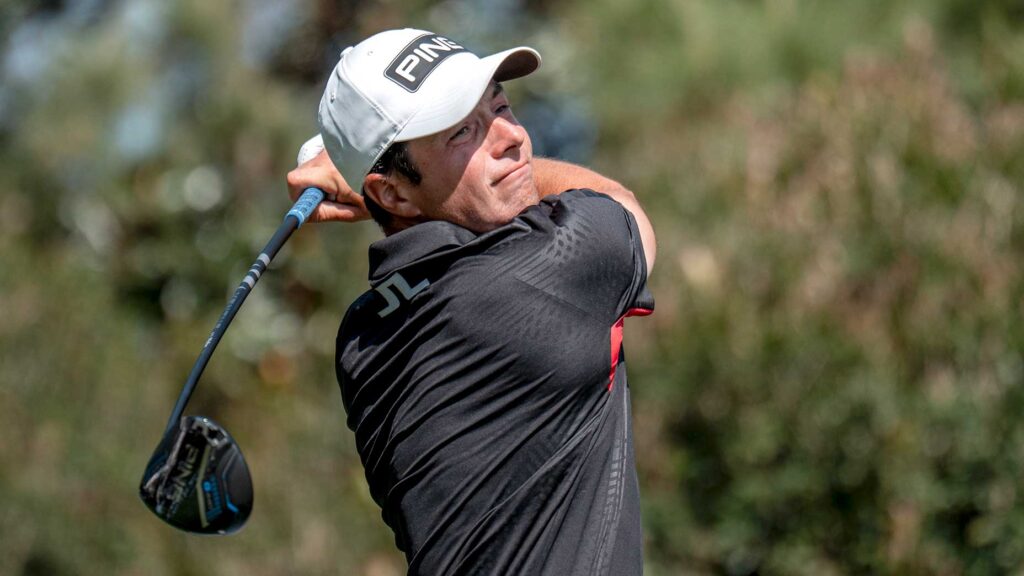Understanding Spin Rates in Golf: Why Lower Isn’t Always Better
In the world of recreational golf, there’s a constant buzz about achieving lower spin rates on drives. Golfers everywhere seem to believe that reducing spin is the golden ticket to longer, straighter drives. However, as GOLF’s Fully Equipped podcast co-host Jake Morrow points out, this obsession with low spin isn’t always beneficial.
The Spin Rate Obsession
For over a decade now, the narrative has been that lower spin means better performance; however, this mantra has led many golfers astray. Morrow emphasizes that the ultimate goal isn’t just to hit the lowest spinning driver possible. “The goal of your life is not to hit the lowest spin thing you could find,” Morrow said. This raises a critical question for golfers: Is there a downside to prioritizing low spin over factors like distance and accuracy?
The pursuit of lower spin began with a movement that aimed to nullify the spin rates below 2000 RPM. Many avid golfers, like co-host Johnny Wunder, have fallen into the trap of believing this hype, only to realize later that the reality is much more nuanced.
Understanding Optimal Launch Conditions
One of the pivotal tools in determining ideal spin rates and launch angles is the optimal launch conditions chart provided by Ping. This tool segments various player profiles based on their angle of attack and ball speed, enabling golfers to understand what spin rates and launch angles might work best for them.
For example, the chart indicates that a golf ball driven with a ball speed of 200 mph can potentially travel up to 375 yards when launched at a 17-degree angle with a spin rate of 1750 RPM. Yet, such figures should be viewed as guidelines rather than strict goals.
The Misunderstanding of Launch Angles
Morrow explains that many golfers do not realize how significant a 17-degree launch angle is. “People don’t understand how high 17 degrees of launch is. That’s not going to work for you,” he says. Such high launch angles may not align with the skill sets of many recreational golfers.
For those with slower swing speeds, like those in the mid-140s, an optimal launch angle must rise even higher, often exceeding 20 degrees to achieve the desired lower spin. In reality, many of these players would benefit more from aiming for a launch angle in the range of 10-12 degrees combined with a spin rate exceeding 2500 RPM.
Sacrificing Control for Distance
The quest for the elusive low spin can lead golfers to sacrifice control, especially for those in the mid-range ball speeds. Morrow and Wunder analyzed their own experiences with spins and concluded that the frantic chase for lower numbers can lead to an inefficient swing. Morrow points out that a player like Wunder would not effectively utilize a sub-2000 RPM spin unless he is launching the ball at an optimal 17 degrees or higher.
Conversely, less experienced golfers might find that lower spin rates do not align with their swing patterns and can result in poor ball control. Herein lies the irony: in trying to gain more distance, golfers may unintentionally worsen their overall game.
The Importance of Personalization
Every golfer is unique, and the answers that work for Tiger Woods may not apply to the average weekend golfer. Instead of blindly following trends, it’s vital for players to focus on their individual swing characteristics and selecting equipment that complements their game. Golfers are encouraged to undergo personalized club fittings that can determine their optimal launch conditions and suitable spin rates.
Debunking Common Myths
Many golfers tell tales of increased distance and control correlated with lower spin rates, which further propagates the myth that distance comes solely from reducing spin. While spin plays a role, it becomes evident that golfers must factor in launch angle and overall swing mechanics.
Wunder reminisces about the fervor in online forums where players boast about extraordinary distance gains after adopting lower spinning drivers. "It’s visceral," he claims. While exciting, these stories often oversimplify the complexities involved in ball dynamics.
The Role of Technology in Modern Golf
Modern technology has introduced golfers to various tools and metrics that were previously unavailable. High-tech launch monitors can gauge a player’s swing speed, attack angle, and spin rate, thereby facilitating a more informed approach to equipment selection. However, emerging technologies can lead golfers to over-rely on statistics rather than trusting their instinct and experience on the course.
Seeking Balanced Performance
Achieving a balance between spin, launch angle, and ball speed can significantly enhance overall performance. Golf isn’t merely a numbers game; it’s about understanding the interplay between these variables. A golfer focused on achieving a lower spin rate might find themselves better suited to compromise on spin for better directional control—and thus, better scores.
Conclusion: Embrace Holistic Improvement
In conclusion, the journey toward optimizing your golf game requires a holistic approach. Instead of fixating solely on lower spin rates, golfers should aim to understand their unique requirements. By recognizing the importance of proper launch angles, ball speed, and spin rates, players can truly enhance their performance on the course.
For more insights, elevate your game by listening to GOLF’s Fully Equipped podcast or consider a professional club fitting session at True Spec Golf. The right tools and knowledge can empower you to play your best golf yet in 2025 and beyond.


